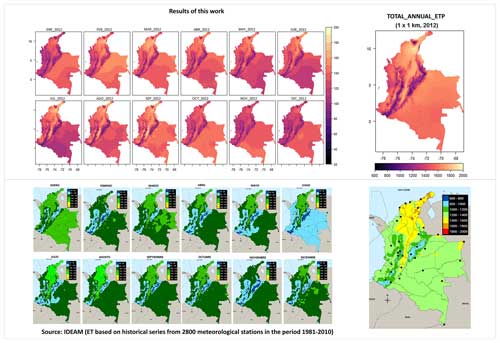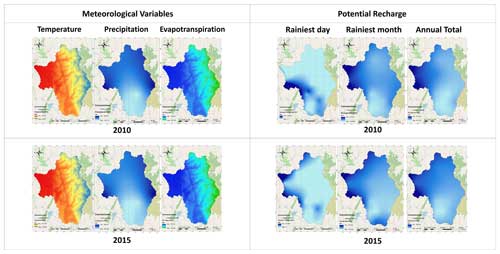Allen, R. G., Pereira, L. S., Raes, D., and Smith, M.: Crop evapotranspiration - Guidelines for computing crop water requirements – FAO Irrigation and drainage paper 56, ISBN 92-5-104219-5, 1998.
Bradbury, K., Dripps, W., Hankley, C., Anderson, M., and Potter, K.: Refinement of two methods for estimation of ground water recharge rates, University of Wisconsin, https://digital.library.wisc.edu/1711.dl/KFEMSXNDWNLS78L (last access: 27 June 2024), 2000.
Hargreaves, G. H. and Samani, Z. A.: Reference crop evapotranspiration from temperature, Appl. Eng. Agr., 1, 96–99, https://doi.org/10.13031/2013.26773, 1985.
Instituto de Hidrología, Meteorología y Estudios Ambientales (IDEAM): Consulta y descarga de datos hidrometeorológicos, http://dhime.ideam.gov.co/atencionciudadano/ (last access: 27 June 2024), 2024.
Instituto de Hidrología, Meteorología y Estudios Ambientales (IDEAM).: Zonificación y codificación de unidades hidrográficas e hidrogeológicas de Colombia, ISSN: 2346-4720, 2013.
Islam, S., Singh, R., and Khan, R. A.: Methods of estimating groundwater Recharge, IJEA., 5, 6–9, ISSN 2320-0804, 2016.
Mercado, O. A.: oamercadod/Data_grid_Hydrometeorology_Lebrija, Zenodo [data set], https://doi.org/10.5281/zenodo.13968447, 2024.
R Core Team: A language and environment for statistical computing, R Foundation for Statistical Computing, Vienna, Austria, https://www.R-project.org/ (last access: 27 June 2024), 2024.
Risco, E. and Lavado, W.: Generación de una base de datos de evapotranspiración grillada y de alta resolución a nivel nacional (1981–2014), https://hdl.handle.net/20.500.12542/954 (last access: 27 June 2024), 2015.
Samani, Z.: Estimating Solar Radiation and Evapotranspiration Using Minimum Climatological data, J. Irrig. Drain. Engrg., 126, 265–267, https://doi.org/10.1061/(ASCE)0733-9437(2000)126:4(265), 2000.
Stoertz, M. W. and Bradbury, K. R.: Mapping Recharge Areas Using a Groundwater Flow Model – A Case Study, Ground Water, 27, 220–229, https://doi.org/10.1111/j.1745-6584.1989.tb00443.x, 1989.








